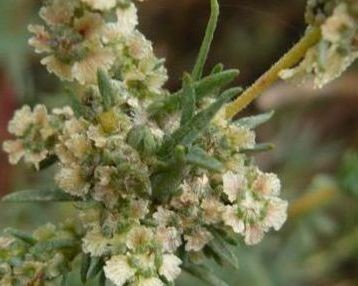Forage kochia
(Bassia prostrata)

Description
Bassia prostrata, the forage kochia, is a Eurasian plant in the subfamily Camphorosmoideae of the family Amaranthaceae (formerly treated as Chenopodiaceae), introduced to the United States as rangeland forage and for fire control. Bassia is a genus of flowering plants in the family Amaranthaceae. They are distributed in the western Mediterranean to eastern Asia. Some occur outside their native ranges as introduced species. The species of genus Bassia are annuals or perennial subshrubs. Their leaves are variable. The flowers are normally inconspicuous, in spike-like inflorescences without bracteoles. The fruits are achenes. The seed contains an annular, horseshoe-shaped or folded embryo that surrounds the perisperm. The fruiting perianth remains either unappendaged or develops 5 wings. The wings are spiny in Bassia hyssopifolia. According to its most recent description, the genus is defined by its three types of C4 "kochioid" leaf anatomy. Many other characters cannot be used to differentiate species from one another, because they are variable among individuals within the species. The genus mainly occurs in steppe and desert ecosystems. Some species can be found in ruderal sites and salt marshes up to subalpine altitudes. Phylogenetical research suggests that the genus evolved in the Miocene.
Taxonomic tree:







